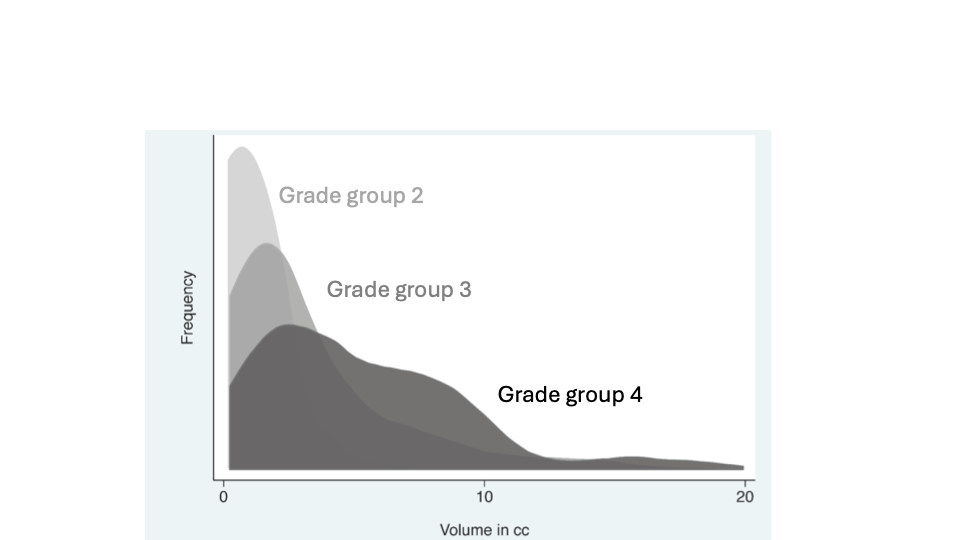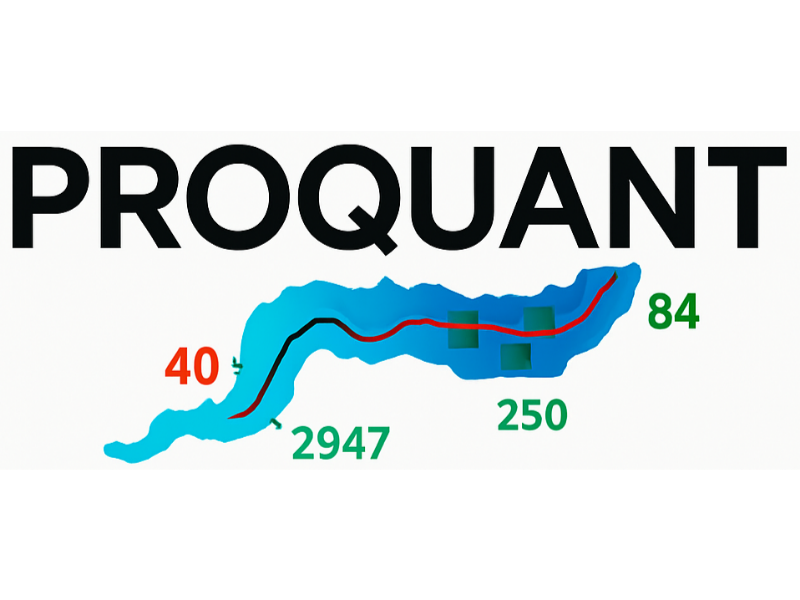What is wrong with the Gleason score?
The Gleason score was created in 1967 based on study of 6-month survival on a small number of patients. It has not been importantly changed since.
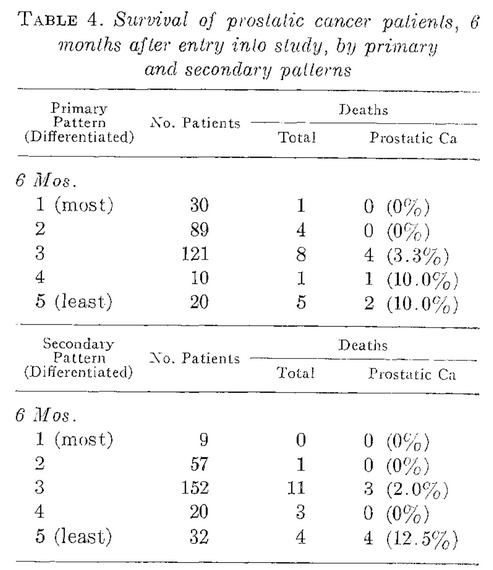
The Gleason score is based on the proportion of more versus less aggressive disease. This is very unusual in cancer and leads to some counterintuitive results for individual patients.
Below is a hypothetical example of two patients with a single positive core. The patient who has the core with the most pattern 4 and the most cancer overall is assigned grade group 2; the patient with the core with the least pattern 4 and the least cancer overall is assigned grade group 4.
Blue: Normal tissue. Orange: pattern 3. Red: pattern 4.
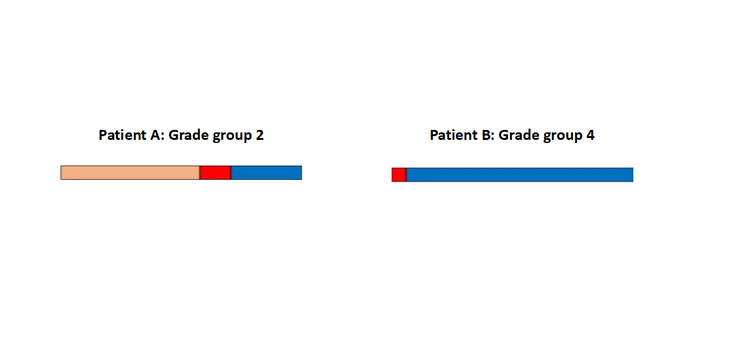
Surgical pathology findings from two actual patients are given below. The patient assigned grade group 4 has 100-fold less cancer.Blue: Normal tissue. Orange: pattern 3. Red: pattern 4.
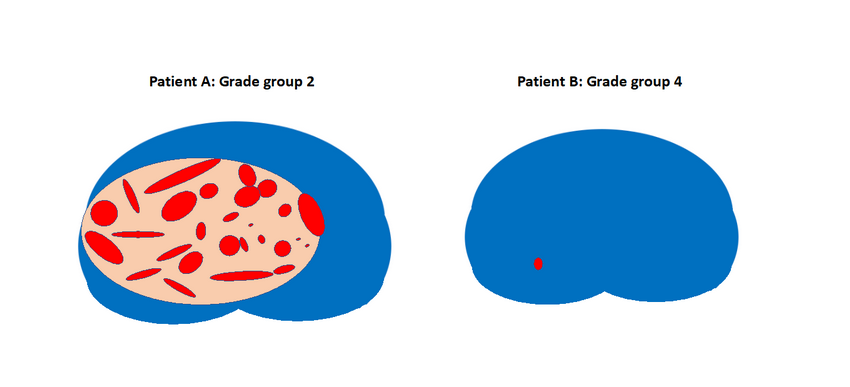
Why has Gleason score stood the test of time as a predictor? The Gleason score is correlated with the amount of pattern 4 disease. The figure below shows volume of pattern 4 in the radical prostatectomy specimens of men with different Gleason score.
